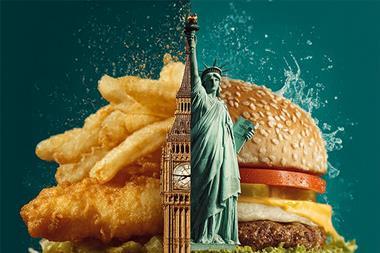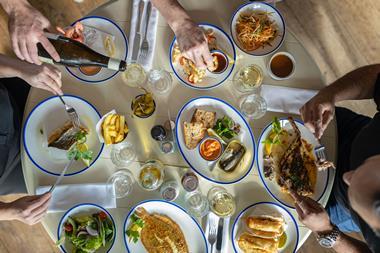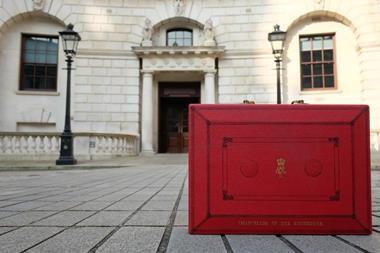I’m penning this from the Eurostar – en route to Paris – to see how their restaurant scene compares to ours. But if you look at the direction of travel of over the past 12 months, it’s been London bound. Everyone wants a slice of London at the moment.
2014 has been a year of unprecedented openings in the capital. This isn’t just because one day everyone woke up and decided to open a restaurant in London. Our stable government, currency, property system and legal infrastructure makes London not only a desirable place to live but also work. And when a city attracts business and wealth, the services sector flourishes.
Not only do the global fashion brands have to be seen in London - Patek Philippe has just opened a flagship store on the corner of Old Bond Street and Clifford Street at vast expense - but so do the chefs and restaurateurs around the world. Business accounts and disposable incomes are music to restaurateur’s ears.
But what will the next 12 months have up its sleeve? I don’t believe in predicting trends or suggesting what will be hot and what won’t be for 2015, as so often in this cyclical world of trends, once it goes mainstream it’s no longer as desirable anyway - I like to call it the Ugg effect. It’s why some of my favourite restaurants are the ones created by restaurateurs who are not chasing trends but open places that are timeless and for want of a better word, “off-trend”. However, here are a few of my thoughts for the year head:
The past year has seen those of us who chase new restaurant openings have to top up our Oyster Cards and head out of Zone 1. This is inextricably linked to the rising rents and premiums in the West End. The independent restaurateur is at the risk of becoming extinct as it’s only those with deep pockets or private equity funding that can even consider opening a restaurant in the likes of Mayfair or Soho. Yet rather than not opening at all, they’re opening in places like Clapton and Peckham, and are no doubt a welcome addition to locals in the area. Neighbourhood dining is back on the map. And we are likely to see more and more of this - it’s also a precursor to the impact Crossrail is going to have on restaurants in London and the suburbs.
Not only will it be easier for people from as far as Reading to just ‘pop up’ to town for the evening but it’s going to vastly transform where people go out during the working week. Up until now, most people will stay central for a few drinks and a bite to eat after work but the arrival of Crossrail means people will be able to go back home quickly after leaving the office - meaning restaurants located outside of the West End will start to experience a busier trading week, rather than just relying on the usual Friday and Saturday nights.
The large institutional landlords across London and the UK have started to appreciate the importance of restaurants and how they can help to shape their estates. Restaurants can help define an area - a high street restaurant selling chicken with some spicy sauce can be found anywhere across the UK - yet taking less well-known, independent restaurants gives the area personality.
The mentality of doing a deal with the highest rent, regardless of what the restaurant is, seems to have stopped, thankfully. Landlords now embrace food and beverage operators and you can see this across the estates owned by the likes of Shaftesbury Estates in Soho, Capital & Counties in Covent Garden and Argent over in King’s Cross.
It’s no secret that one place can help to transform an area. I only need to say the words Chiltern Firehouse and that pocket of Marylebone, sandwiched between Baker Street and Marylebone High Street, has gone from a sleepy, residential part of W1 to having the majority of London’s paparazzi camped outside.
The area is attracting a new crowd - like Dover Street and Mount Street - it’s now a destination. Even if they can’t get into Andre Balazs’s, there is Tyler Brûlé’s Monocle Cafe, along with Trunk Clothiers, Sunspel and a smattering of independent boutiques and restaurants. There’s even a new residential development appearing out of the ground called ‘The Chilterns’.
It’s also important to note that developers and landlords are now looking at what they are putting in the ground floor to influence the sort of tenants who take the upper floors of their property. It used to be the case that the priority was to lease the offices above and whatever went in below was an after thought. It’s the same for residential properties - long gone are the days that living above a restaurant was seen as a reason to offer below the asking price. Just look at the price tag at the apartments above Scott’s and 34.
I’ve got an eye on the works that The Crown Estate have been doing for the past year around St James’s, partly because my office is on Haymarket, but also to see which new restaurant operators have signed up to St James’s Market - the new development in between Haymarket and Lower Regent Street.
And as this goes to print, it is rumoured that Dover Street Market is moving from the Mayfair street that now is home to the Arts Club, Victoria Beckham’s new boutique and one of Alan Yau’s soon-to-open restaurants, to the old Burberry building on Haymarket. This may be the catalyst that the highway joining Piccadilly Circus and Trafalgar Square has long needed to inject some cool brands and more importantly, Londoners, into the locality.
I don’t like to predict trends, especially when it comes to food, as I don’t believe they just happen as soon as we stop finish singing Auld Lang Syne but the rise of Persian food is definitely becoming more mainstream.
People are starting to appreciate that it’s not just about pita bread, falafel and hummus. Yotam Ottolenghi has been championing it for a number of years and we’ve seen Honey & Co, Arabica Bar & Kitchen and The Palomar really embrace this regional cuisine and offer it in attractive environments in London.
Next year will see Josh Katz open his Middle Eastern influence restaurant Berber & Q in east London and Ceru, an eastern European concept run by Barry Hilton, open a permanent site in London.
2014 has been the year of crowdfunding. It’s a clever, alternative way to raise money. It may not be the best way for a restaurant to get its finance - using a specialist advisor has its benefits - but for many chefs or restaurateurs starting out, it can be a very useful tool. Many people on social media who give cash because they like the person or brand, see it as a sort of Just Giving for the hospitality industry.
With more and more restaurants opening, twinned with the difficulty of getting debt from a bank, there’s no doubting that this way of raising money will still prove to be popular over the next 12 months.
I have a feeling that 2015 may be the year we start to see some of London’s leading restaurateurs expand abroad, as well as some of the leading restaurants in the world. We’re witnessing Heston Blumenthal take the Fat Duck down under for six months – like an artist on tour – before he opens a Dinner there permanently, and Noma’s residency at the Mandarin Oriental in Tokyo both show that a chef and a restaurant can be a global brand. We’ve seen Burger & Lobster take the plunge across the pond and open their largest restaurant to date in the Flat Iron district of Manhattan. There’s definitely an appetite for some of our restaurants we have in London to open in the likes of Hong Kong and other cities across the US, such as Chicago.
2015 is setting itself up to be another exciting year for our industry.
Adam Hyman is founder of CODE restaurant consultancy.











































